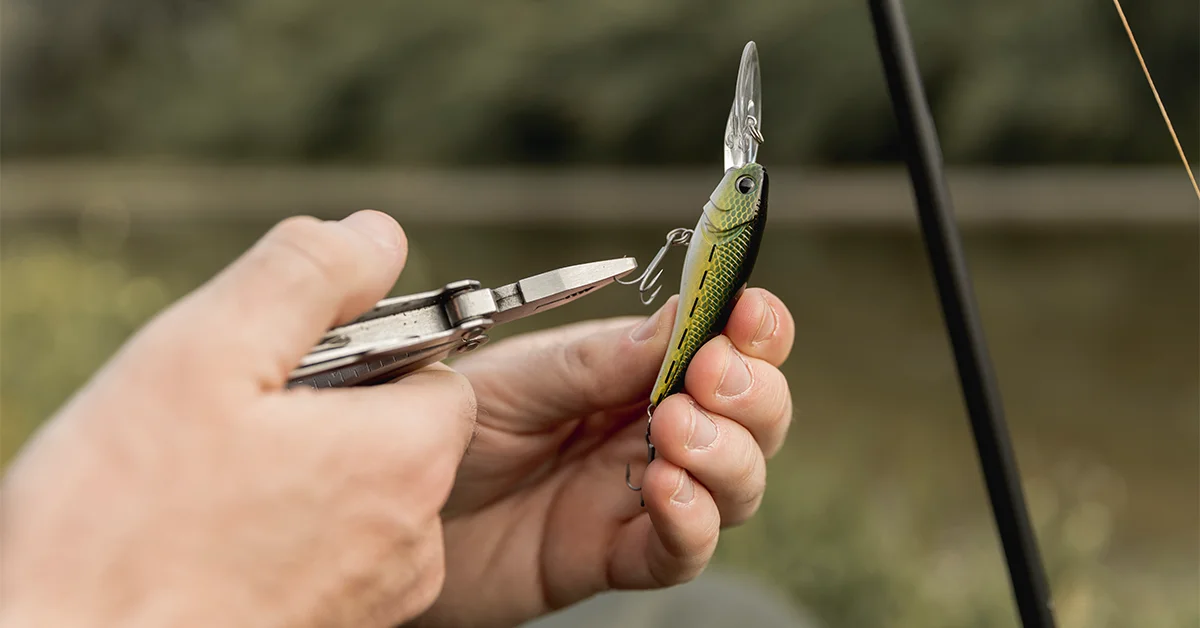BLOG
Suno Prompts Made Simple: Get Better Audio Results Fast

Ever felt your audio projects hitting a wall? Maybe the voiceover doesn’t feel natural, or music elements didn’t gel as you imagined. It happens to everyone. Enter Suno, the AI-powered audio wizard. While its capabilities are impressive, the real magic lies in using the right Discover how to master [suno prompts] with simple tips that boost your audio quality and speed up your creative workflow.. Crafting a compelling prompt is like unlocking a secret level in a video game—it elevates your results and speeds up your creative flow.
If you’re wondering, “How can I make Suno actually deliver what I hear in my head?”—you’re in the right place. We’ll break down exactly how to make your Suno prompts sing. No fluff, no jargon: just clear, game-changing advice.
TRENDING
Proximity Server Explained: Bringing Data Closer To You
Understand Your Audio Vision
Before typing out a prompt, take a moment to clarify your goal. Ask yourself:
- Is it music or voiceover?
A melodic jingle requires a different prompt structure than a conversational voice clip. - What’s the mood or style?
Upbeat pop, calming narration, or dramatic podcast intro each set Suno on a distinct creative path. - What format and length do you need?
A 15‑second ad jingle vs. a 5‑minute narration demands different prompt strategies.
Clear intent is the foundation of better audio.
Craft Suno Prompts Like A Pro
Be Specific, Not Vague
- Music, upbeat.
- Create a catchy, upbeat pop jingle with a female lead vocal, light guitar strumming, and a bright piano hook—20 seconds long.
Specificity matters. The more the AI knows, the closer you get to your target.
Use Reference Points
Want that lo-fi chillhop vibe? Mention it.
- “Inspired by lo‑fi hip‑hop, with mellow piano chords, light vinyl crackle, soft drum groove, around 60 BPM.”
References anchor the model’s creative direction.
Add Emotion or Function
Language like “enthusiastic”, “reassuring”, or “urgent” steers the tone.
- “A warm, enthusiastic voiceover inviting listeners to subscribe to a wellness newsletter.”
Or:
- “Urgent yet friendly tone, like a radio DJ hyping up evening traffic updates.”
Guide the Structure
Structure hints can streamline the output:
- “Start with ambient pad swells, build into full beat, then drop to piano-led chorus.”
And for voice clips:
- “Pause briefly after each sentence to allow for music beds or transitions.”
Call Out Technical Specs
If B format, sample rate, or mixing preference matters, note it.
- “Export at 48 kHz, stereo, with a gentle reverb tail.”
Prompt Templates: Your Starting Line
Template for Music
lessCopyEditCreate a [genre/style] track, approximately [length] seconds long. Features: [instruments], [tempo], [vocal gender/type if needed]. Mood: [adjectives like upbeat, dreamy]. Structure: [e.g. intro, build, drop]. Reference: [artist or sub‑genre].
Example
pgsqlCopyEditCreate a 30‑second dreamy indie‑pop intro. Features acoustic guitar, synth pad, and breathy female vocals. Tempo around 90 BPM. Mood: nostalgic and uplifting. Structure: guitar intro, vocal melody, gentle synth swell. Reference: similar to “Midnight City” by M83.
Template for Voiceover
lessCopyEditProduce a [tone] voiceover, [length] seconds/minutes long, in [gender/age range]. Content: [script or bullet talking points]. Style: [e.g. conversational, motivational]. Include: [pauses, emphasis on keywords].
Example
vbnetCopyEditProduce a warm, conversational voiceover, 45 seconds long, in a mid‑30s male voice. Content: “Welcome to BrightSide Wellness…” Script includes emphasis on “community” and “transformation.” Leave a 1‑second pause after each sentence for background music.
Troubleshooting Your Suno Prompts
- Less music than expected?
Add extra structure details: “Include a 4-bar instrumental break between verses.” - Voice sounds flat?
Beef it up: “Sound excited, like you’re telling a friend about an awesome event.” - Mix balance off?
Add instructions: “Make vocals sit 3 dB above the beat, everything in stereo, with light 1-second reverb.”
Iterate With Purpose
- Initial run: See what Suno produces. Get a sense of tone, structure, quality.
- Listen critically: What’s missing or off?
- Refine prompt: Add more detail, change tone words, or specify structure.
- Repeat until you reach the sweet spot.
Iteration isn’t wasting time—it’s dialing in. Fine-tuning your prompt once is better than manually editing messy outputs.
Pro Tips for Fast Optimization
- Limit instructions per prompt: Too many flags can confuse the AI. Focus on 2–3 key elements each time.
- Use Suno variables: If the platform supports them, set tempo, key, or format explicitly.
- Batch test: Try similar Suno Prompts with slight tweaks to find what resonates.
- Save winning Suno Prompts: Keep a prompt library—useful templates on tap for future sessions.
Common Prompt Use Cases
| Use Case | Prompt Example |
|---|---|
| YouTube video intro | “30‑second upbeat pop intro with brass hits, energetic drums, female lead vocal.” |
| Product ad jingle | “15‑second catchy jingle, happy ukulele, bass, percussion—feel like summer vacation.” |
| Podcast intro | “Warm, friendly male voice, 10 seconds: ‘Hey, welcome to …’, slight echo after last word.” |
| Meditation track | “Ambient 2‑minute track, slow pad, gentle Tibetan bowl tones, deep bass,” etc. |
| Animated explainer VO | “Clear, calm voice, mid‑gender, 60 seconds. Emphasize ‘simple’ and ‘innovative’.” |
These real-world Suno Prompts speed up your process—tailored to your needs.
Sound Quality + Export Tips
- High sample rate: Specify 44.1 or 48 kHz for cleaner audio.
- Stereo mix: Unless mono is required.
- Normalized volume: Say, “-1 dB headroom” for safe mastering.
- Ask for stems: “Please separate drums, bass, vocals each on own track.”
Quality Boosters: Next-Level Tips
- Reference track upload: Use Suno’s feature to train on a specific style.
- Style adjectives: Words like “vintage”, “analog tape warmth”, or “crisp modern sheen” guide the texture.
- Hybrid Suno Prompts: Combine music and voice in one scene—“Podcast trailer style with music bed morphing under voice.”
Step-By-Step Quick Guide
Define goal: type (music/vo), mood, length.
Use a template, fill in details.
Add tone, structure, technical notes.
Submit to Suno.
- Review and note what’s off.
- Refine prompt with new clarity.
- Iterate till it hits the mark.
- Save and reuse your winner.
Real-World Example: Before & After
Before Prompt
Make me a happy song.
Result
A generic loop, too brief and unstructured.
After Prompt
Create a 20‑second happy indie‑pop jingle with an upbeat acoustic guitar intro, kids choir ‘la‑las’, moderate 100 BPM, bright major chord progression, ending in a big crescendo—like a feel‑good summer ad.”
Result
You get a fully formed, energetic, purposeful jingle.
See the difference? Detail and structure took you from meh to magic.
Conclusion
Mastering Suno prompts isn’t about trickery—it’s about clarity, detail, and iteration. Once you learn to speak the Suno language—defining genre, mood, structure, tone, and tech specs—you’re in control. The result? Audio that matches your vision, faster and easier than ever before.
So next time you’re staring at a blank Suno Prompts box, don’t wing it. Spend the few extra minutes defining what you want. Your ears—and your sanity—will thank you.
FAQs
What is a Suno Prompts?
A Suno Prompts is the instruction you give the Suno AI audio tool to generate music or voice output. It defines style, mood, structure, and technical specs so the AI delivers results tailored to your creative goal.
How long should my Suno Prompts be?
Aim for one to three clear sentences. Include key details like genre, length, mood, and structure—enough to guide the AI, but avoid overloading it with every possible detail.
Can I include lyrics or a script in Suno Prompts?
Absolutely! Embedding your own lyrics or voice script ensures Suno follows your content closely. Just indicate clearly, e.g., “Use this voice script: ‘Welcome to our channel…’”, plus tone and pacing instructions.
Do I need to iterate Suno Prompts?
Yes. Suno often needs refining when initial output is too generic or missing elements. Listen, tweak your prompt by adding clarity or emphasis, and try again—usually 2–3 iterations are enough to hit your target.
How do I make my Suno audio sound more professional?
Include technical details in your prompt: sample rate (44.1/48 kHz), stereo output, volume normalization (“-1 dB headroom”), and any effects like “light reverb tail.” These adjustments elevate raw AI output to studio quality.
ALSO READ: Beyond The Clouds: The Comfort Of The Rainbow Bridge Poem
BLOG
Why Lvliangliangwudifangfeng Is Gaining Natural Health Buzz

In recent years, there’s been a huge shift toward embracing traditional and natural remedies. People everywhere are searching for alternatives to synthetic medications and are diving deep into ancient herbs and natural healing ingredients. One name that keeps popping up in conversations is Lvliangliangwudifangfeng — a tongue-twister at first glance, but a powerhouse when it comes to potential health benefits.
So why is Lvliangliangwudifangfeng suddenly making waves in the natural health world? Is it just a trend, or does it really offer something special for your wellness journey? In this article, we’re going to break it all down, explore what this herb is, what it’s used for, and why it’s creating such a buzz.
TRENDING
Phase 1 Environmental Site Assessment Cost Explained
What Is Lvliangliangwudifangfeng?
Let’s start with the basics. Lvliangliangwudifangfeng is a natural herbal formulation rooted in traditional Chinese medicine (TCM). It combines multiple ingredients, with one of the primary ones being Fangfeng — an herb that has been used for centuries in Asia for its anti-inflammatory and immune-boosting properties.
The full name, Lvliangliangwudifangfeng, refers to a unique preparation or formula originating from the Lvliang region of China. It’s part of a broader push in China and beyond to rediscover and elevate lesser-known herbal combinations that can support the body’s natural defenses and promote holistic well-being.
Why Natural Health Enthusiasts Are Paying Attention
Let’s face it: the world is more health-conscious than ever. From boosting the immune system to relieving chronic stress, people are leaning toward natural options — and Lvliangliangwudifangfeng fits right into that picture.
Here are some reasons why it’s gaining popularity:
Immune System Support
One of the standout benefits associated with Lvliangliangwudifangfeng is its potential to boost the immune system. The herb Fangfeng is known to help ward off colds, infections, and other common illnesses. Many users report fewer sick days and quicker recovery after incorporating it into their routines.
Anti-Inflammatory Properties
Chronic inflammation is linked to a wide range of diseases, from arthritis to heart conditions. This herbal mix is believed to help reduce inflammation in the body naturally — making it appealing to people looking to manage symptoms without resorting to harsh medications.
Adaptogenic Qualities
Some components in Lvliangliangwudifangfeng may have adaptogenic effects, meaning they help the body adapt to stress. Whether it’s work-related anxiety or emotional strain, this herb might support overall balance and resilience.
Traditional Wisdom Meets Modern Wellness
There’s something powerful about blending ancient herbal traditions with modern health trends. Many wellness seekers are drawn to remedies that have stood the test of time — and Lvliangliangwudifangfeng is a prime example.
A Deeper Look Into The Key Ingredients
Let’s zoom in on what makes this herbal formula tick.
Fangfeng (Saposhnikovia divaricata)
This is the main ingredient and has been used in TCM for treating wind-related ailments (like chills, headaches, and fevers). It’s also known for its detoxifying and pain-relieving effects.
Licorice Root
Often used to enhance the effects of other herbs, licorice root also brings soothing qualities to the mix — particularly for digestive issues and respiratory conditions.
Angelica Root
This root is prized in Chinese medicine for blood circulation and pain relief, especially in women’s health.
Cnidium
Used for its anti-inflammatory and antifungal effects, cnidium adds another layer of healing to the formulation.
Together, these ingredients work in harmony to promote health, vitality, and balance.
How To Use Lvliangliangwudifangfeng
You might be wondering, “How do I even take this?” Thankfully, Lvliangliangwudifangfeng is available in several user-friendly forms:
- Herbal teas (just steep and sip)
- Capsules or tablets (convenient for daily use)
- Powdered blends (to mix into smoothies or soups)
Most experts recommend consulting a TCM practitioner before starting any herbal treatment. This ensures the dosage is right for your specific needs and that there are no interactions with medications you may be taking.
Who Should Consider Taking It?
Lvliangliangwudifangfeng isn’t a miracle cure — but it could be an excellent addition for those seeking:
- Natural immune system support
- Relief from mild allergies or colds
- Better stress management
- A supplement to support traditional wellness routines
That said, it’s not ideal for everyone. Pregnant women, people with autoimmune diseases, or those on strong medication should consult with a professional before trying it.
Potential Side Effects And Safety Tips
As with any herbal product, safety is key. While Lvliangliangwudifangfeng is generally considered safe, some people may experience:
- Mild digestive discomfort
- Drowsiness (especially when taken in high doses)
- Allergic reactions (in rare cases)
Always start with a small dose to see how your body reacts. And remember — natural doesn’t always mean harmless. Being informed is your best defense.
The Rising Buzz On Social Media And Wellness Blogs
Type Lvliangliangwudifangfeng into TikTok, YouTube, or Reddit, and you’ll find hundreds of people sharing their experiences. From TCM experts breaking down the science, to influencers posting before-and-after wellness transformations, the internet is full of buzz.
While it’s great to see herbal medicine gaining traction, always verify sources and stay grounded in evidence-based research. Trends come and go — but solid health practices last forever.
Where To Buy Lvliangliangwudifangfeng
Interested in trying it? You’ll find Lvliangliangwudifangfeng online through herbal supplement retailers and specialty TCM shops. Look for:
- Certified organic ingredients
- Third-party lab testing
- Transparent labeling
Avoid shady marketplaces or products with unclear sourcing. Stick with reputable suppliers to ensure quality and authenticity.
Conclusion
Lvliangliangwudifangfeng isn’t just another herbal trend. It’s a fascinating blend of tradition, science, and wellness potential — and it’s carving out its place in the natural health movement for a reason.
If you’re exploring holistic ways to feel better, boost your immune system, and bring balance back into your life, this might be the herbal ally you’ve been looking for. Just remember: natural health is a journey, not a quick fix. Do your research, listen to your body, and when in doubt, consult a trusted expert.
FAQs
What is Lvliangliangwudifangfeng?
Lvliangliangwudifangfeng is a traditional Chinese herbal formulation primarily made with Fangfeng and other natural ingredients, believed to support immune health, reduce inflammation, and help the body adapt to stress.
Is Lvliangliangwudifangfeng safe to use daily?
Generally, yes — but always consult a healthcare provider or TCM practitioner before starting any new supplement, especially if you have pre-existing conditions or are on medication.
How do you take Lvliangliangwudifangfeng?
It’s commonly taken as a tea, capsule, or powdered blend. Dosage depends on your goals and health status, so it’s best to get professional advice.
Can Lvliangliangwudifangfeng help with stress?
Yes, many users report feeling more balanced and less anxious, thanks to the adaptogenic properties of the herbal ingredients.
Where can I buy authentic Lvliangliangwudifangfeng?
You can find it online through trusted TCM retailers and health stores. Look for organic certification and third-party lab testing for quality assurance.
ALSO READ: Unlocking Speed: The Prodrive Performance Pack Experience
BLOG
Hooked On Action: Mastering The Art Of Fishing With Jerkbait

There’s nothing quite like the thrill of feeling a tug on your line, your pulse quickening as a predator fish locks onto your bait. For anglers seeking an edge in the water, jerkbait fishing offers an exciting and effective method that blends skill, strategy, and instinct. If you’re hooked on action, then mastering the art of fishing with jerkbait could be your next game-changer.
Whether you’re new to or looking to fine-tune your technique, this guide will walk you through everything you need to know—from types and setups to tactics and seasonal strategies. Let’s dive into the journey that has captivated anglers worldwide.\
TRENDING
Inside The Candid Forum: Real Talk, Real Voices
What Is Jerkbait Fishing?
Jerkbait fishing is a technique that involves using a type of lure known as—a hard-bodied lure designed to mimic injured baitfish. The angler imparts a jerking motion with the rod to make the lure dart erratically through the water. This movement triggers a predatory response in fish like bass, walleye, and pike.
The appeal of lies in their versatility and effectiveness. Unlike crankbaits or spinnerbaits, which rely on consistent motion, shine when paused, mimicking a wounded prey that’s easy to ambush.
Why Choose Jerkbait?
If you’re wondering why so many pros and hobbyists are hooked on jerkbait fishing, here’s why:
- Versatile action: You can fish them fast, slow, shallow, or deep.
- All-season effectiveness: Especially productive during cooler months.
- Lifelike appearance: With 3D eyes, rattles, and realistic finishes, they closely imitate baitfish.
- Deadly pause: The ability to suspend or slowly rise/sink during pauses draws out hesitant fish.
Types Of Jerkbaits
There are three main types of to consider when building your tackle box:
Floating Jerkbaits
These rise to the surface when paused. They are ideal for shallow waters or when fish are feeding closer to the surface.
Suspending Jerkbaits
Perhaps the most popular, these lures stay in place during the pause, making them perfect for enticing fish during colder months when predators are lethargic.
Sinking Jerkbaits
Designed for deeper water, these descend during the pause and can be used to target fish near the bottom or in drop-offs.
Choosing The Right Setup
To get the most out of your fishing experience, your gear should complement the technique.
Rod
A medium or medium-light power rod with a fast or extra-fast action is ideal. Lengths between 6’6” and 7’0” allow for good control and distance without sacrificing precision.
Reel
A baitcasting reel is great for experienced anglers, while spinning reels work well for beginners. Look for a reel with a decent gear ratio (6.3:1 or faster) to keep up with aggressive retrieves.
Line
Fluorocarbon is preferred due to its low visibility and sensitivity. Line weights between 8 to 12 lbs are typical, though some anglers opt for braided lines with a fluorocarbon leader for added strength.
Mastering The Retrieve
The heart of jerkbait fishing is in the retrieve. Mastering this rhythm is what separates casual casters from seasoned pros.
The Classic Jerk-Pause
- Cast your and let it settle.
- Use short, sharp jerks of your rod to make the bait dart.
- Pause between jerks (1–5 seconds depending on conditions).
- Watch the line closely—many strikes occur during the pause.
Speed Adjustments
- Cold water (40–55°F): Slow, with longer pauses.
- Moderate water (55–70°F): Balanced retrieve with occasional pauses.
- Warm water (70°F+): Faster retrieves to match active fish behavior.
Jerk Direction
Keep the rod tip down or to the side to maintain control. Downward jerks are common for shallower waters, while sideways jerks help avoid surface drag.
Seasonal Jerkbait Strategies
Understanding when and how to use seasonally can skyrocket your success rate.
Spring
Fish are coming out of winter and are hungry. Use suspending in shallow coves and transition zones.
Summer
This is when jerkbaits take a backseat—but don’t write them off. Try deeper-diving jerkbaits along ledges or drop-offs during early mornings and cloudy days.
Fall
As baitfish school up and predators feed aggressively, jerkbaits can dominate. Work them quickly and erratically to mimic panicked prey.
Winter
This is when jerkbaits shine. The suspending variety, worked slowly with long pauses, is deadly for lethargic bass and other gamefish.
Color Selection Tips
Color can make or break your presentation. Here’s a guide to get it right:
- Clear water: Use natural colors like silver, shad, or ghost patterns.
- Stained water: Go with chartreuse, gold, or brighter hues.
- Low light: Darker colors like black or blue offer better silhouettes.
Don’t be afraid to experiment. Sometimes a flashy or unexpected color triggers aggressive bites.
Common Mistakes To Avoid
Jerking too aggressively: Overdoing it can spook fish. Aim for controlled movements.
Neglecting the pause: Many anglers rush the pause, missing strikes.
Wrong line type: Using monofilament can reduce sensitivity and affect sink rates.
Not tuning the bait: Ensure your bait runs true by adjusting the eyelet with pliers if it veers to one side.
Poor hook maintenance: Sharp hooks are essential. Replace or sharpen them regularly.
Advanced Tips For Success
- Use a loop knot: Allows the bait to move more freely and naturally.
- Add suspend dots or strips: Customize buoyancy for finicky fish.
- Mix up the cadence: 2 jerks and a pause, 3 jerks and a longer pause—fish differently until you find what works.
- Pay attention to weather: Cloudy days and light wind often make for the best jerkbait conditions.
Conclusion
Jerkbait fishing is not just a technique—it’s an art form. The interplay between motion and stillness, the patience in the pause, and the thrill of a sudden strike make this method truly addictive. If you’re hooked on action, then investing time into mastering the art of fishing with jerkbait is well worth it.
Whether you’re chasing trophy bass or simply want to become a more versatile angler, jerkbaits deserve a permanent spot in your tackle box. So grab your gear, hit the water, and let the dance of the jerkbait begin.
FAQs
What is jerkbait fishing?
Jerkbait fishing is a technique using lures that mimic injured baitfish. Anglers jerk the rod to make the bait dart and pause, triggering predatory fish to strike.
When is the best time to use a jerkbait?
Jerkbaits are effective year-round but particularly excel in cooler months like fall and winter when fish are more sluggish and respond well to a paused presentation.
What type of rod is best for jerkbait fishing?
A medium or medium-light power rod with fast action around 6’6″ to 7’0″ in length offers the best control and sensitivity for jerkbait retrieves.
How do I know if a fish strikes during the pause?
Watch your line closely for twitches or sudden movement during the pause. Many strikes happen then, and sometimes the fish just load the rod without a visible bite.
Should I use a floating, suspending, or sinking jerkbait?
Choose based on water depth and conditions. Floating is for shallow, suspending for mid-depths and cold water, and sinking for deeper targets or fast-moving rivers.
ALSO READ: Phase 1 Environmental Site Assessment Cost Explained
BLOG
Phase 1 Environmental Site Assessment Cost Explained

When buying, selling, or developing real estate, one critical step often overlooked by many is conducting a Phase 1 Environmental Site Assessment Cost (ESA). Understanding the cost of this assessment is crucial because it can significantly impact your budget and project timeline. Whether you’re a homeowner, commercial developer, or investor, knowing what goes into the Phase 1 ESA cost will help you make informed decisions and avoid unexpected surprises. In this article, we’ll break down everything you need to know about Phase 1 Environmental Site Assessment Cost in a clear, straightforward way.
TRENDING
Stay Cool And Stylish: The Rise Of Sweat Resistant Bolo Ties
What Is A Phase 1 Environmental Site Assessment Cost?
Before diving into the Phase 1 Environmental Site Assessment Cost, it’s important to understand what a Phase 1 Environmental Site Assessment Cost actually is. A Phase 1 ESA is an investigation conducted by an environmental professional to identify potential or existing environmental contamination liabilities on a property. This process involves reviewing historical records, inspecting the site, and interviewing people knowledgeable about the property. The goal is to determine if hazardous substances or petroleum products have affected the land.
Phase 1 ESAs are typically required during property transactions, especially for commercial real estate, to protect buyers from unexpected cleanup costs and liabilities under environmental laws. If potential contamination is found, the next step is often a Phase 2 ESA, which involves sampling and lab testing.
Why Does A Phase 1 ESA Cost Matter?
You might be wondering: why focus so much on the cost? Because understanding the price range and factors that influence the cost helps you budget effectively and negotiate better deals. If you skip or delay the ESA, you risk buying a property with hidden environmental issues that can lead to expensive remediation or legal troubles.
The cost of a Phase 1 ESA varies widely based on location, property size, and complexity of the site history. Knowing what affects the price will help you choose the right service without overpaying.
What Factors Affect The Cost Of A Phase 1 Environmental Site Assessment Cost?
Property Size
Larger properties require more extensive inspections and record reviews, which naturally take more time and effort. A small residential lot might cost less than a sprawling commercial or industrial site.
Property Type and Use
Commercial or industrial properties tend to have more complicated histories and a higher chance of contamination than residential properties, so they usually cost more to assess.
Location
The cost can vary significantly depending on the region and Phase 1 Environmental Site Assessment Cost regulations. Urban areas or places with a history of industrial activity may require more detailed investigations.
Complexity of the Site History
If the property has a long or complicated history of industrial use, multiple ownerships, or previous contamination reports, the assessment will take longer and be more expensive.
Environmental Professional’s Expertise and Fees
Different Phase 1 Environmental Site Assessment Cost consulting firms charge different rates depending on their reputation, experience, and the scope of the report.
Additional Services
Sometimes, extra services like asbestos or lead-based paint surveys, or Phase 2 sampling recommendations, might be bundled or requested, increasing the total cost.
Typical Phase 1 Environmental Site Assessment Cost Breakdown
- Small Residential Property: $1,000 – $2,500
For single-family homes or small parcels with little history of industrial use. - Commercial or Industrial Property (Under 5 Acres): $2,500 – $5,000
Properties like retail stores, offices, or light manufacturing sites typically fall in this range. - Large Commercial or Industrial Properties (Over 5 Acres): $5,000 – $10,000+
Large facilities or sites with extensive historical use and complexity. - Additional Fees:
Travel, report preparation, rush service, or special investigations can add $500 or more.
What Is Included In The Cost?
When you pay for a Phase 1 ESA, you’re paying for a thorough, professional review that generally includes:
- Records Review:
Searching public and private databases for historical land use, previous environmental reports, permits, and government records. - Site Inspection:
A qualified environmental professional visits the property to look for signs of contamination, such as storage tanks, spills, distressed vegetation, or unusual odors. - Interviews:
Discussions with current and past owners, occupants, or local government officials to gather information about past uses and incidents. - Report Preparation:
A detailed report that summarizes findings and determines if there are recognized environmental conditions (RECs) on the property.
How To Save Money On A Phase 1 Environmental Site Assessment Cost
- Shop Around and Get Quotes:
Don’t settle for the first estimate. Compare multiple environmental firms to find competitive pricing without sacrificing quality. - Be Clear About Your Needs:
Explain the purpose of the assessment clearly. If the property is simple and residential, you may not need an extensive report. - Limit the Scope:
If allowed, you might negotiate a limited-scope ESA for less complex sites. - Bundle Services:
If you need additional inspections like asbestos or lead surveys, bundling these with your ESA can sometimes reduce costs. - Understand What You’re Paying For:
A cheap ESA might save money upfront but could cost more if the report is incomplete or inaccurate.
When Is A Phase 1 ESA Worth The Investment?
While the cost might seem steep upfront, a Phase 1 ESA can save you thousands or even millions in future costs by identifying potential environmental issues early. This is especially true for commercial properties, industrial sites, or land with a history of manufacturing, chemical storage, or waste disposal.
If you’re buying or selling property, the Phase 1 ESA can also speed up the transaction by providing the necessary documentation lenders or insurers require.
Conclusion
Understanding the Phase 1 Environmental Site Assessment Cost is essential for anyone involved in real estate transactions or property development. The price varies widely depending on property size, location, history, and the environmental professional you hire. But the investment is often worth it to avoid costly surprises related to contamination and regulatory issues down the road.
If you’re planning to buy, sell, or develop property, consider a Phase 1 ESA an essential step—and budget for it accordingly. With the right information and a trusted environmental consultant, you can protect your investment and move forward with confidence.
FAQs
What is a Phase 1 Environmental Site Assessment Cost?
A Phase 1 Environmental Site Assessment Cost is a professional investigation to identify any potential or existing environmental contamination on a property before buying, selling, or developing it.
How much does a typical Phase 1 ESA cost?
The cost ranges widely but generally falls between $1,000 and $10,000 depending on property size, location, and complexity.
How long does a Phase 1 ESA take to complete?
Most Phase 1 ESAs take between 2 to 4 weeks, depending on the complexity of the property and availability of historical records.
Is a Phase 1 ESA required by law?
While not always legally mandatory, many lenders and insurers require a Phase 1 ESA before approving loans or insurance for commercial real estate transactions.
What happens if contamination is found during the Phase 1 ESA?
If potential contamination is identified, a Phase 2 ESA is typically recommended to collect samples and perform lab testing to assess the extent and severity of contamination.

 EDUCATION1 month ago
EDUCATION1 month agoUnlocking Success With Thestudypoints In Your Learning Journey

 TECH1 month ago
TECH1 month agoDiscovering Insanont: A Fresh Perspective You’ll Love

 TECH1 month ago
TECH1 month agoCan I Buy 1.5f8-p1uzt? Here’s What You Should Know

 BLOG4 weeks ago
BLOG4 weeks agoUnlocking преводсч: A Simple Guide For Beginners

 BLOG1 month ago
BLOG1 month agoWandering Through Sztavrosz: A Place Time Forgot

 BLOG1 month ago
BLOG1 month agoIOFBodies.com Ethics: Innovation Or Ethical Overstep?

 ENTERTAINMENT1 month ago
ENTERTAINMENT1 month agoUnlocking Legends: Exploring Gameverse TheGame Archives

 BLOG1 month ago
BLOG1 month agoLost In Sinpcity: Stories From The Digital Underground
















